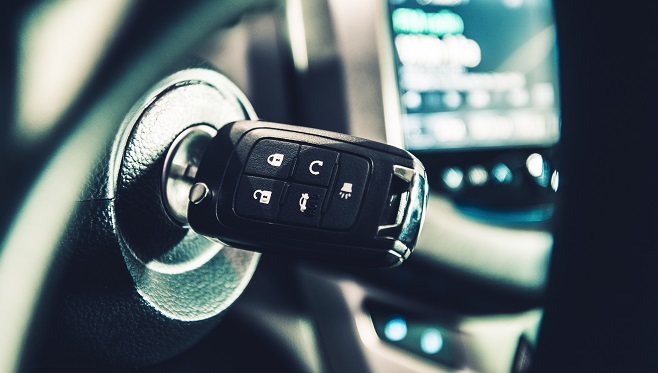
 Data Structure
Data Structure Networking
Networking RDBMS
RDBMS Operating System
Operating System Java
Java MS Excel
MS Excel iOS
iOS HTML
HTML CSS
CSS Android
Android Python
Python C Programming
C Programming C++
C++ C#
C# MongoDB
MongoDB MySQL
MySQL Javascript
Javascript PHP
PHP
- Selected Reading
- UPSC IAS Exams Notes
- Developer's Best Practices
- Questions and Answers
- Effective Resume Writing
- HR Interview Questions
- Computer Glossary
- Who is Who
What is the full form of CDI?
Introduction
Capacitor Discharge Ignition (CDI) is an electronic ignition system that uses a high voltage electrical discharge from a capacitor to ignite the fuel mixture in the combustion chamber of an internal combustion engine. CDI systems offer several advantages over traditional contact breaker points, including improved ignition timing accuracy, higher energy spark, and increased reliability.

In a CDI system, the ignition coil is charged with energy from the battery, and when the spark plug needs to fire, the energy is rapidly released from the capacitor to create a high voltage electrical discharge. This results in a powerful spark that ignites the fuel mixture in the engine, leading to improved performance, fuel efficiency, and lower emissions. CDI systems are commonly used in high-performance engines, motorcycles, and marine engines.
History
The Capacitor Discharge Ignition (CDI) system was first introduced in the early 1960s as a replacement for the traditional contact breaker points ignition system. The first CDI systems were used in high-performance racing engines, such as those used in Formula One and IndyCar racing, where reliability and high-performance were critical. CDI systems were quickly adopted in other types of high-performance engines, including motorcycles, marine engines, and small engines used in power equipment. The development of solid-state electronic components in the 1970s and 1980s led to the further refinement and miniaturization of CDI systems, making them more reliable, efficient, and affordable. Today, CDI systems are commonly used in a wide range of internal combustion engines, from small power equipment to high-performance racing engines.
Working Principle of a CDI System
The working principle of a Capacitor Discharge Ignition (CDI) system can be explained in the following steps
Charging The CDI system uses a charging circuit to charge a high voltage capacitor with energy from the battery.
Triggering When the engine's crankshaft rotates, a triggering circuit sends a signal to the CDI module to release the energy stored in the capacitor.
Discharging The CDI module rapidly discharges the capacitor, sending a high voltage electrical pulse to the ignition coil.
Amplification The ignition coil amplifies the high voltage pulse and sends it to the spark plug.
Ignition The high voltage pulse creates a spark at the spark plug, which ignites the air-fuel mixture in the engine's combustion chamber
The CDI system's ignition timing can be controlled by adjusting the charging and triggering circuits to release the energy from the capacitor at the desired time. The CDI system can also be used with a rev limiter, which prevents the engine from over-revving by cutting off the spark plug ignition at a predetermined engine speed. The use of a CDI system provides several benefits, including improved fuel efficiency, higher energy spark, and better ignition timing accuracy.
Different Types of CDI
There are two main types of Capacitor Discharge Ignition (CDI) systems
Analog CDI Analog CDI systems use analog electronic components, such as capacitors, diodes, and transistors, to store and discharge the electrical energy. These systems are relatively simple and inexpensive, but they have limited accuracy and reliability.
Digital CDI Digital CDI systems use microprocessors and digital electronic components to store and discharge the electrical energy. These systems offer improved accuracy and reliability, and they can be programmed to adjust the ignition timing based on the engine's operating conditions.
Within these two categories, there are several sub-types of CDI systems, including
Multi-Spark CDI Multi-spark CDI systems release multiple sparks during each firing cycle, providing a more complete and efficient combustion of the air-fuel mixture.
High Energy CDI High energy CDI systems use higher voltage capacitors and ignition coils to produce a more powerful spark, leading to improved engine performance
Inductive Discharge CDI Inductive discharge CDI systems use an inductive discharge coil to store and discharge the electrical energy, offering improved reliability and accuracy.
Optical Trigger CDI Optical trigger CDI systems use an optical sensor to detect the engine's position, providing improved accuracy in ignition timing.
The type of CDI system used depends on the specific application and the desired performance characteristics.
Advantages and Disadvantages
Advantages of Capacitor Discharge Ignition (CDI) systems include
Improved Ignition Timing CDI systems offer precise control over ignition timing, resulting in improved engine performance and fuel efficiency.

High Energy Spark CDI systems produce a high energy spark that is more powerful than conventional ignition systems, leading to improved combustion and reduced emissions.
Durability CDI systems are relatively simple and have fewer moving parts, resulting in improved reliability and durability.
Low Maintenance CDI systems require minimal maintenance, reducing the overall maintenance costs of the engine.
Disadvantages of CDI systems include
Cost CDI systems are generally more expensive than conventional ignition systems due to the complex electronics involved.
Complexity CDI systems are more complex than conventional ignition systems, requiring specialized knowledge and equipment for installation and maintenance.
Voltage Spike CDI systems can produce a high voltage spike that can damage other electronic components if not properly controlled.
Environmental Sensitivity CDI systems can be sensitive to environmental factors such as temperature and humidity, which can affect their performance.
Conclusion
Capacitor Discharge Ignition (CDI) systems offer several advantages over conventional ignition systems, including improved ignition timing, high energy spark, durability, and low maintenance requirements. While CDI systems are more expensive and complex than conventional ignition systems, their benefits make them a popular choice for high- performance engines in a variety of applications. With advances in technology and materials, CDI systems are likely to become even more efficient and cost-effective in the future.
FAQs
Q1. What is the difference between CDI and TCI?
Ans: CDI stands for Capacitor Discharge Ignition, while TCI stands for Transistorized Coil Ignition. While both types of ignition systems are electronic, the main difference is that CDI uses a capacitor to store and discharge energy to create a spark, while TCI uses a transistor to control the flow of current to the ignition coil.
Q2. Can a CDI system be used on any engine?
Ans: CDI systems are suitable for use in a wide range of engines, from small motorcycles to large boats and industrial machinery. However, the specific requirements of the engine and the CDI system must be matched to ensure proper operation and performance.
Q3. How long do CDI systems last?
Ans: CDI systems are generally durable and reliable, and with proper maintenance can last for many years. However, the lifespan of a CDI system can depend on factors such as the quality of components, environmental conditions, and frequency of use.

